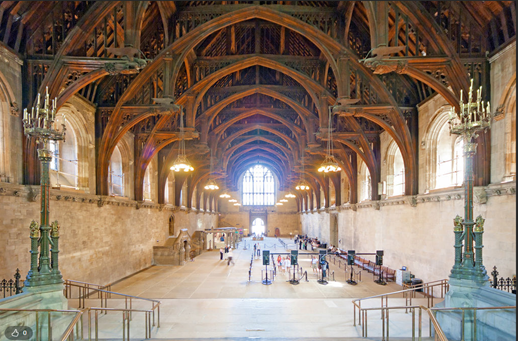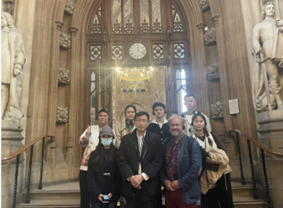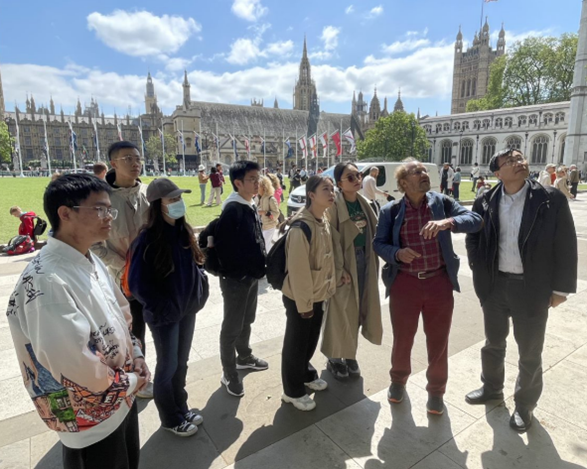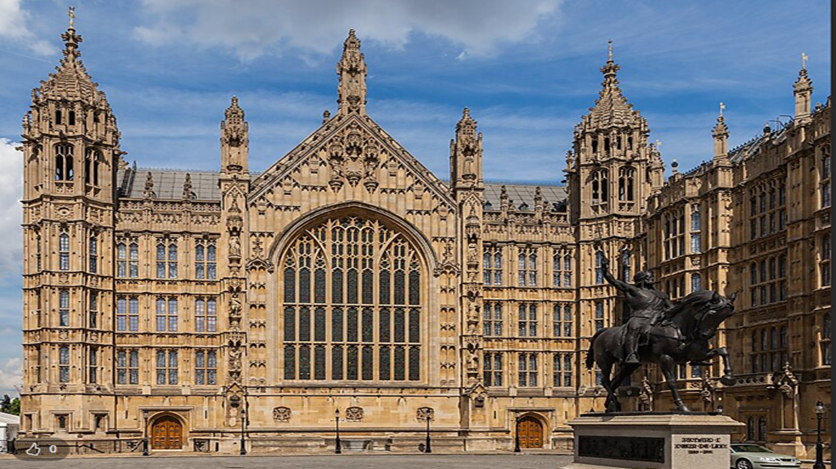On Friday 6 June, the UK Campus of Peking University HSBC Business School (PHBS UK) has organized a trip for its visiting students from Peking University School of International Relations to study British Parliamentary history at the UK Parliament. This field-study trip was led by Dr Paul Flather who is a senior academic of Oxford University in politics and media studies.
The students started their field study at the Parliament Square. Dr Paul Flather has explained most statues in the Square for their stories and history. This trip continues after entry to the Westminster Hall in the Parliament. The Palace of Westminster has almost 900 years of history, and it serves as the meeting place for both the House of Commons and the House of Lords. It also serves King or Queen's coronation. It has a mark of Queen's coffin lying on the ground.
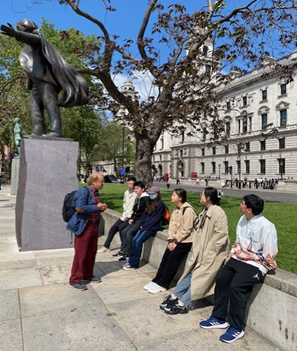
Dr Paul Flather explains that the Parliament is divided to two parts: House of Commons and House of Lords. The members of House of Commons are elected by public votes from more than 500 constituencies of the UK to represent the interest of their regions for engaging in lawmaking. The members of House of Lords come mainly from nomination by Premi Minister or the Leader of the Opposition. There are some 90 members that have been inherited from their Noble families. The major power of the House of Lords is to control legal bills proposed by the House of Commons before it goes to the King or the Queen for the final approval. If the Lords rejected three times of a Bill, then the House of Commons can initiate a change of previleges enjoyed by the members of House of Lords. The key purpose of designing the UK Parliament is to retain the balance of political powers, so that is why the Parliament Building has two sides - the House of Commons that has green carpet and the House of Lords that has a red carpet, explained by Dr Paul Flather.
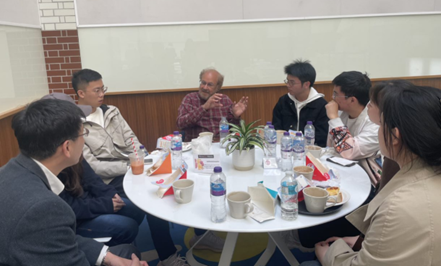
The students have seen how the votes are collected and accounted in front of the Debating Chamber of House of Commons. The field-study trip enriched the PKU students to understand more about the Parliamentary history of Britain and its working mechanism. It is a very lively tuition that not only the students enjoyed it very much but also they will be benefited for life.
After visit the Parliament, the students also visited the UK Supreme Court and have further talk with Dr Paul Flather about history of the UK Parliament in the lunch café in the Court.

